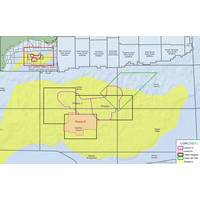
Viridien, TGS Wrap Up OBN Survey in Gulf of America
exploration in Keathley Canyon,” said Dechun Lin, EVP, Earth Data, Viridien.“Laconia Phase III is designed to significantly enhance imaging, optimizing near-term exploration of the critical Paleogene play. Through cooperation with Viridien, utilizing leading-edge OBN acquisition and imaging technologies, we expect sharper subsalt definition, more reliable velocity models and clearer fault imaging supporting both regional and infrastructure-led exploration,” added David Hajovsky, EVP Multi-Client at TGS
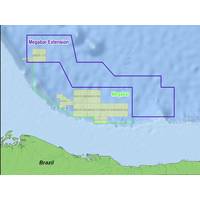
Viridien, TGS Start 3D Seismic Survey Offshore Northern Brazil
is scheduled to commence in early September and conclude by late November.Imaging of the Megabar Extension survey will be conducted by Viridien’s Subsurface Imaging experts, leveraging their high-end proprietary time-lag full-waveform inversion (TL-FWI) and reverse time migration (RTM) imaging technologies to provide enhanced geological understanding.This will help to reveal new play potential, improve prospect evaluation and de-risk exploration. Initial imaging products are expected by the third quarter of 2026, and final data expected to be available in the first quarter of 2027.“We
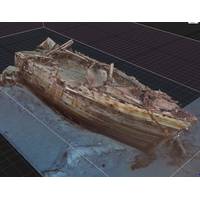
Falklands Maritime Heritage Trust Showcases Shipwreck Technology at Goodwood Festival of Speed
the need for human divers in high-risk zones, enabling safer, deeper and more accurate exploration than ever before.Future Lab’s 2025 theme of "Exploring Technology for a Better World" provides a perfect stage for this story, with FMHT's work demonstrating how scanning and imaging technologies are transforming wider industries.The Trust’s exhibition is staffed by a collaborative team of FMHT staff and Trustees, along with partners from Voyis (Canada) and Saab (Sweden).
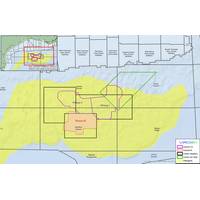
Viridien, TGS Kick Off Next Phase of Laconia Sparse OBN Survey in US Gulf
quality seismic solutions.“Laconia Phase III represents another significant step forward in our ability to deliver advanced data products in one of the world’s most important offshore regions. Through cooperation with Viridien and the combination of our leading edge OBN acquisition and imaging technologies, we are confident this project will provide tremendous value to our customers,” said Kristian Johansen, CEO of TGS.“The success of our Laconia OBN program is a compelling example of the value technological innovation brings to offshore exploration.“By teaming up with TGS
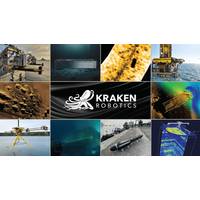
Kraken Robotics Brings 3D at Depth Into Its Fold
in high resolution LiDAR imaging and measurements.3D at Depth is now a wholly owned subsidiary of Kraken. As it transitions to the Kraken brand, it will continue to operate as a trusted partner in subsea LiDAR imaging, complementing Kraken’s suite of synthetic aperture sonar and sub-bottom imaging technologies.“We are pleased to welcome 3D at Depth to the Kraken Robotics team and look forward to offering our comprehensive subsea intelligence solutions to our clients.“Our combined solutions are complementary, enabling us to provide best-in-class technologies to our global customer base
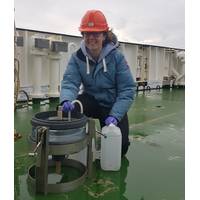
UK NOC's Study Challenges Role of Plankton in Ocean Carbon Storage Process
, Controls over Ocean Mesopelagic Interior Carbon Storage (COMICS) and Carbon Uptake and Seasonal Traits in Antarctic Remineralisation Depth (CUSTARD). These projects were funded by the UK’s Natural Environment Research Council (NERC) and theEuropean Research Council grant Advancing Novel imaging Technologies and data analyses in order to understand Interior ocean Carbon Storage (ANTICS).Over two expeditions, each lasting more than five weeks at sea, NOC scientists and international colleagues studied the twilight zone at four different sites in the Atlantic and Pacific sectors of the Southern
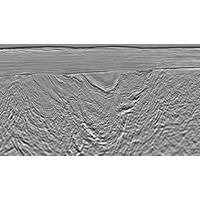
Viridien Concludes Seismic Survey Offshore Malaysia
and thrust belt, extending offshore across the unexplored area.The new high-resolution long-offset dataset provides extensive seismic coverage and significantly enhanced imaging over this promising area.Viridien’s subsurface imaging experts have applied the company’s latest high-end imaging technologies, including full-waveform inversion and Q-tomography, for the first time in the Langkasuka Basin.“We are delighted to have successfully completed our first multi-client project offshore Malaysia, that leverages over 40 years of experience processing seismic data from one of the country&rsquo

Viridien, TGS and Aquila Holdings Deliver Utsira OBN Reprocessing Project
Sverdrup, along with a number of undeveloped discoveries and prospects.The reprocessing project has received significant industry support and leverages strong demand for high-definition seismic imaging in this highly prospective area.Viridien reprocessed the resulting data set with its latest OBN imaging technologies, including time-lag full-waveform inversion, and advanced velocity model building techniques, to yield significant improvements in image resolution and frequency content for fault interpretation and reservoir characterization workflows.“Through the reprocessing of this OBN data, TGS
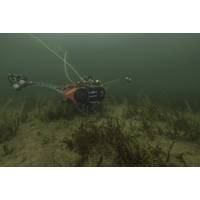
Venterra Expands Marine Hard Bottom Benthic Ecology and Hard Structure Services
Offshore wind services company Venterra Group said it is expanding its marine hard bottom benthic and hard structure offering, underpinned by the environmental capabilities of its marine science consultancy, INSPIRE Environmental, and small business partner, Marine Imaging Technologies, a subsea imaging company.According to Venterra, the expanded offering addresses increasing requirements to monitor marine growth on both introduced hard surfaces (e.g. turbines and infrastructure) and native hard bottom (e.g. rocks and boulders) to assess impacts associated with offshore wind project development.

 August 2025
August 2025





